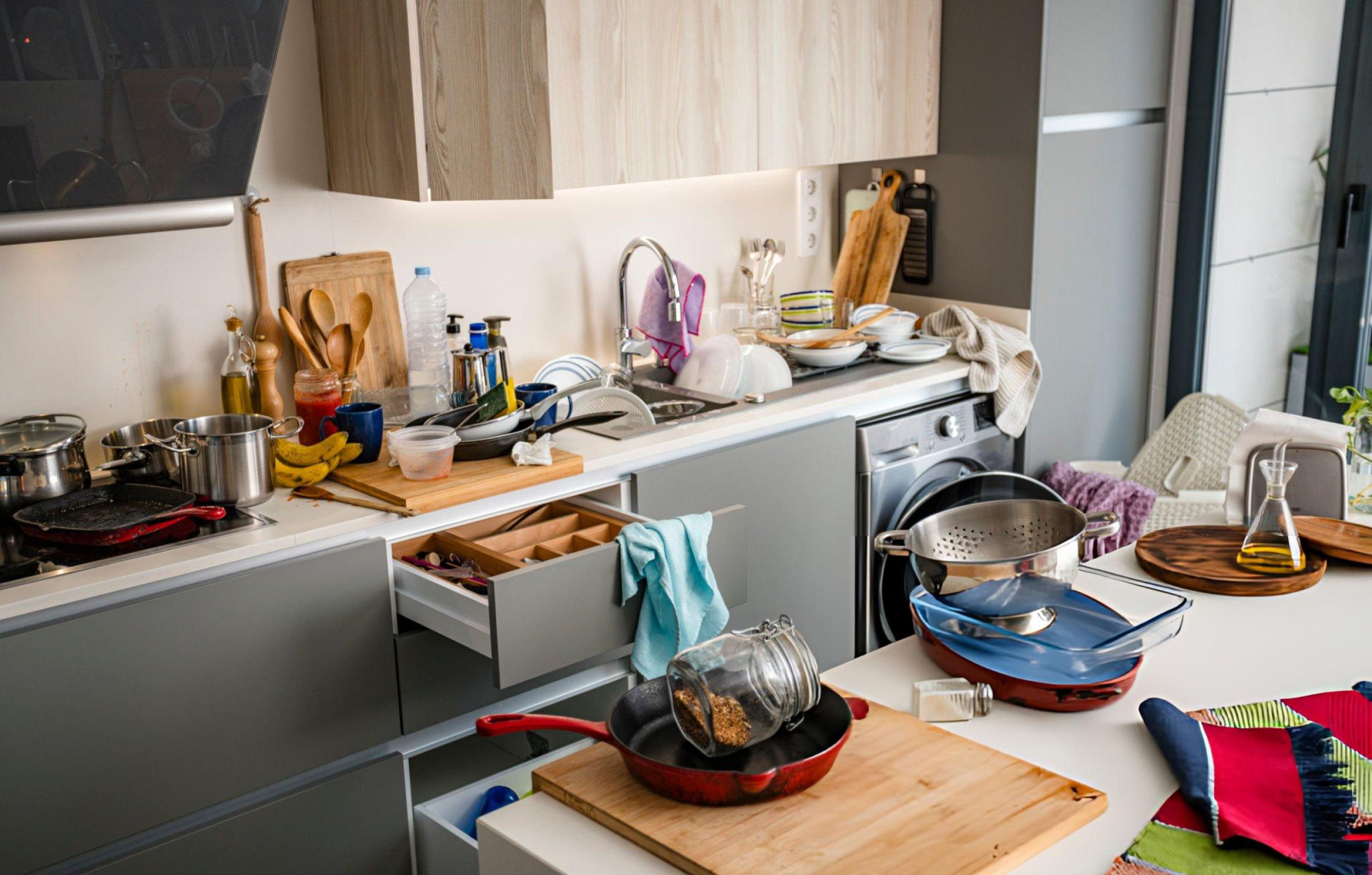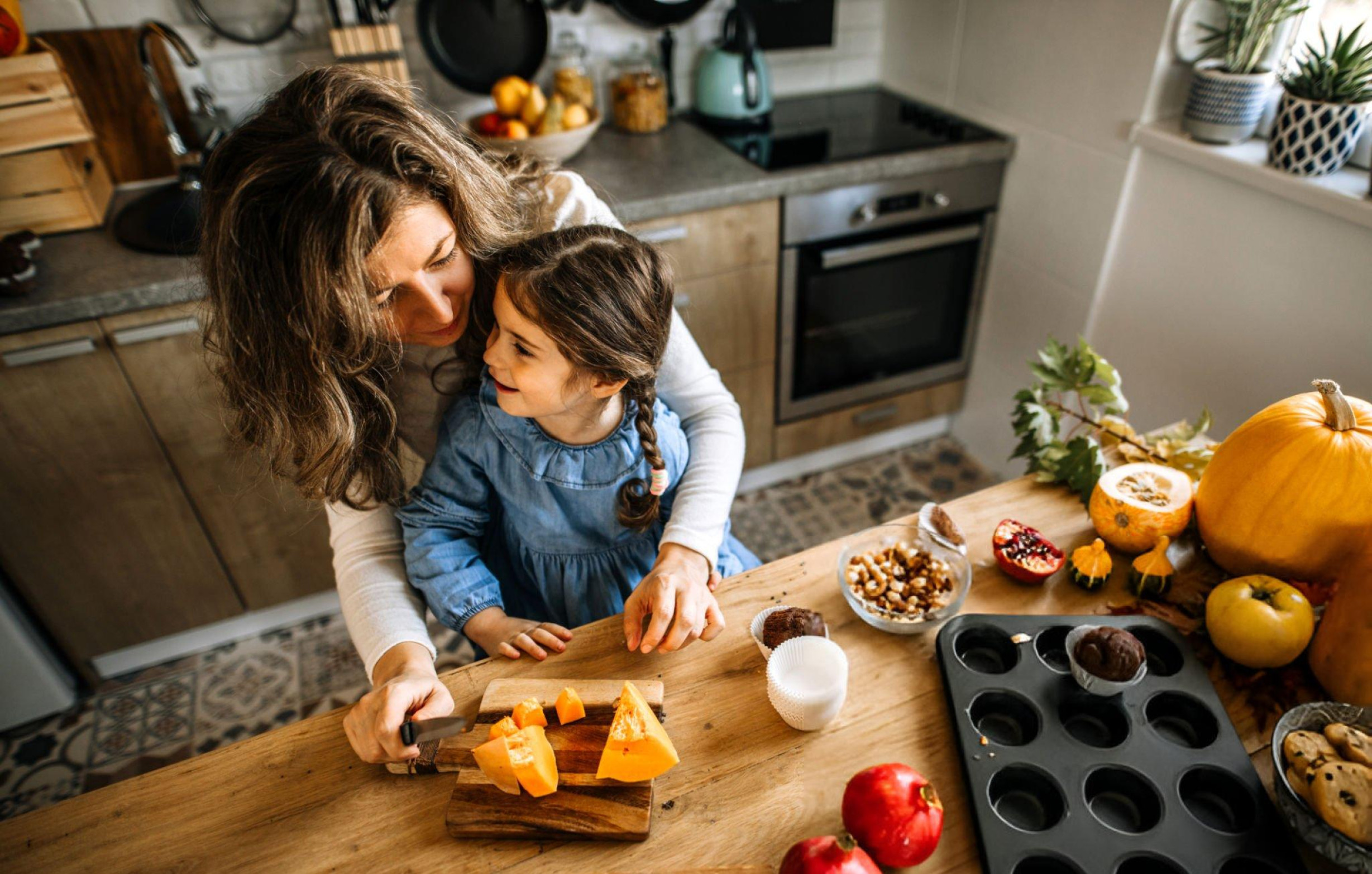The Real Reason Your Kitchen Always Looks Messy (It’s Not What You Think)
You clean your kitchen every single day. You wipe down counters, put away dishes, and organize things back into their places. Yet somehow, within hours, your kitchen looks cluttered and chaotic again. You blame yourself for being messy or disorganized, but the real problem isn’t your habits at all. The issue is that your kitchen was designed to fail from the start, with fundamental layout and storage problems that make keeping it clean nearly impossible. Most kitchens are designed by people who never actually cook or live in them. Builders, architects, and designers create spaces based on how kitchens should theoretically work rather than how families actually use them. This disconnect creates kitchens that look great in photos but become cluttered disasters in real life. Understanding the true causes of kitchen mess helps you fix the actual problems instead of blaming yourself for normal human behavior. The Counter Space Illusion Your kitchen probably has less usable counter space than you think. Sure, you might have plenty of total square footage, but how much is actually available for daily use? That’s the real question most people never ask until they’re frustrated by constant clutter. Appliances occupy prime counter real estate in most kitchens. The coffee maker, toaster, knife block, utensil holder, and dish drying rack together consume 4-6 feet of counter space that never becomes available for actual cooking or staging. These permanent residents turn expansive counters into narrow strips of usable workspace. Corner spaces look substantial but function poorly for daily tasks. The corners of L-shaped and U-shaped kitchens create dead zones where items get pushed back and forgotten. These areas become dumping grounds for mail, keys, and miscellaneous items because they’re not practical for cooking tasks. Space near the sink stays perpetually occupied by dish soap, sponges, hand soap, and drying dishes. This necessary infrastructure consumes 18-24 inches of counter space that appears available but never actually is. Landing zones near the stove remain off-limits during cooking due to heat and splatter concerns. The 12-18 inches on either side of your cooktop can’t hold anything that might melt, burn, or get ruined by grease. The reality is that kitchens designed with “adequate” counter space based on standard measurements often provide less than half that amount for actual daily use. What looks like 12 feet of counter space functions more like 4-5 feet after permanent items claim their territory. The Cabinet Design Flaw Nobody Talks About Kitchen cabinets are designed to maximize storage capacity, not accessibility. This fundamental flaw means that even kitchens with abundant cabinet space force you to leave items on counters because retrieving them from cabinets becomes too inconvenient for daily use. Deep lower cabinets create black holes where items disappear. The back third of most base cabinets becomes effectively inaccessible without getting on your hands and knees to dig through everything in front. Items stored in these depths eventually get forgotten and replaced, creating redundant purchases and more clutter. Upper cabinets place frequently used items out of comfortable reach. Anything above shoulder height requires stretching or getting a step stool, making these spaces impractical for daily-use items. Yet most kitchen designs place upper cabinets at standard heights that work better for storage than regular access. Corner cabinets represent the worst of both worlds – deep and difficult to access. Even with lazy Susans or pull-out systems, corner cabinets force you to navigate awkward spaces to retrieve items. The result is that primo storage real estate goes underutilized while counters overflow. Fixed shelving prevents customization to your actual storage needs. The standard 12-inch shelf spacing doesn’t accommodate tall bottles, small jars, or the varying heights of actual kitchen items. Wasted vertical space inside cabinets means you can’t fit as much as the cabinet volume suggests. No landing space near cabinets makes unloading and reloading awkward. When you remove items from cabinets, where do you put them? Most kitchens lack surfaces adjacent to storage, forcing you to leave cabinet contents on counters during any reorganization effort. The Kitchen Is Actually Multiple Rooms Pretending to Be One Modern kitchens serve too many purposes to function as single spaces, but they’re designed as if cooking is the only activity that happens there. This mismatch creates inevitable clutter as each function competes for the same surfaces and storage. Command center functions turn kitchens into family communication hubs. Mail, keys, backpacks, permission slips, and calendars all naturally gravitate to the kitchen because that’s where family members gather. No amount of discipline will stop this behavior because it’s logical – the kitchen is the central hub. Homework station needs occupy evening counter space because parents cooking dinner need to supervise children doing homework. Backpacks, textbooks, tablets, and school papers spread across available surfaces during the busiest cooking times. Charging station requirements mean phones, tablets, and laptops cluster near available outlets, typically on counters. Modern families need accessible power in the kitchen for multiple devices, but most kitchens lack enough outlets or dedicated charging locations. Coffee and breakfast bars create morning gathering spots that accumulate mugs, breakfast items, and morning chaos during the busiest prep time before school and work. The coffee station alone generates clutter that compounds other morning kitchen activities. Snack zones for kids create additional clutter hot spots where opened packages, spilled crumbs, and grab-and-go items accumulate. Making snacks easily accessible for children means accepting some level of ongoing mess in those areas. Pet feeding stations add bowls, food containers, and pet supplies to kitchen floor space and lower cabinets. These necessary items rarely have dedicated storage, leading to clutter around feeding areas. The “Landing Strip” Problem Everyone enters the home through or near the kitchen in most house layouts, making it the natural landing zone for everything people carry inside. Groceries, packages, shopping bags, take-out food, and everything else gets dumped on the nearest horizontal surface – your kitchen counter. Lack of mudroom or entry storage means items that should stop at the door continue into the kitchen. Coats,


